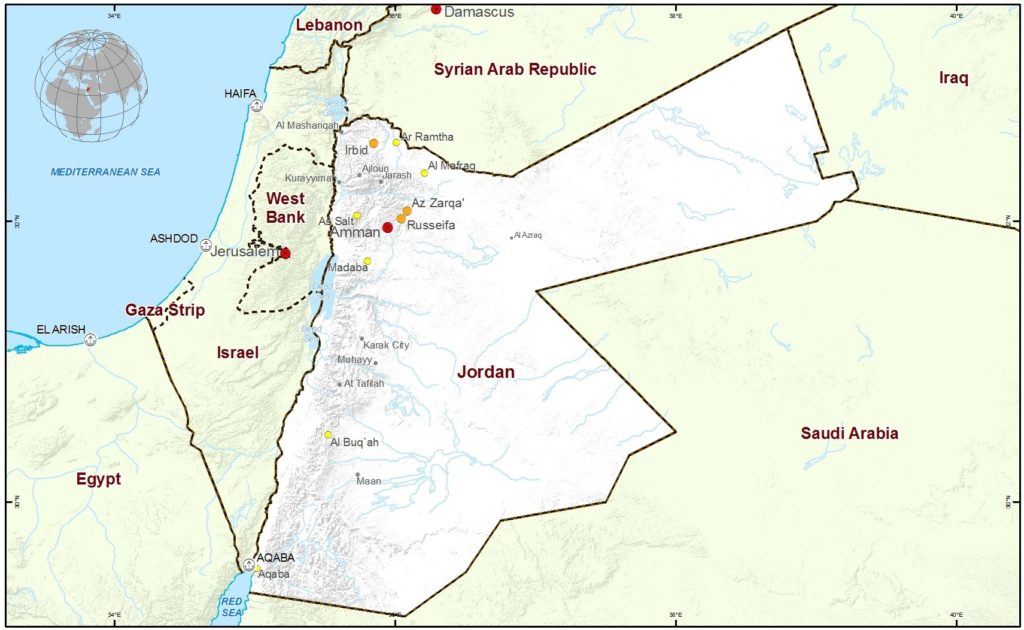Jordan, officially known as the Hashemite Kingdom of Jordan, is a country located in West Asia, bordered by Saudi Arabia, Iraq, Syria, Israel, and Palestine. With its 26 km coastline along the Red Sea in the southwest and the Dead Sea to the west, Jordan boasts a strategic geographical location.

Known as “the oasis of stability” in the Middle East, Jordan has maintained relative peace amidst regional turbulence. Despite being a semi-arid country with one of the smaller economies in the region, it attracts foreign investors and tourists.
Port of Aqaba: Jordan’s Gateway to the World
The primary seaport of Jordan is the Port of Aqaba, situated at the mouth of the Gulf of Aqaba in the Red Sea. This port serves as Jordan’s main connection to global trade and commerce.
Aqaba offers a multimodal transport system and a renowned beach and diving resort, making it a hub for both industry and tourism. It plays a crucial role in the Jordanian economy by exporting phosphate and shells, among other goods.
Over the years, the government has invested in enhancing the Port of Aqaba to meet international standards. Initiatives like the Aqaba Special Economic Zone have spurred economic growth, attracting investment and boosting tourism.
Infrastructure and Operations
Currently, the Aqaba Port comprises 12 terminals with 32 modern berths equipped with state-of-the-art technology. The port authority aims to promote maritime shipping, foster public-private partnerships, and deliver high-quality services.
Strategically located with deep waters, the Port of Aqaba serves as a transshipment center and facilitates ferry services to Nueib’e port in Egypt. Its connectivity through air, road, and rail further enhances its significance.
Evolution and Ownership
Established in 1952, the Aqaba Port Authority has evolved over the years. It is now owned by the Aqaba Development Corporation, with management handed over to Aqaba Danish Management in 2004 to enhance productivity and transform it into a global trading hub.
Terminal Overview
- Aqaba Main Terminal: Situated near Aqaba town, this terminal has 12 berths handling various cargoes, including phosphate, grain, and coal. It boasts modern facilities and infrastructure, contributing significantly to Jordan’s trade.
- Container Terminal: A key driver of Jordan’s economic progress, the Container Terminal operates under a Joint Development Agreement signed between Aqaba Development Corporation and APM Terminals. It has expanded its capacity and services, playing a vital role in the transport chain.
- Industrial Terminal: Located south of the main port, the Industrial Terminal comprises facilities for handling oil, timber, and industrial goods, further diversifying Jordan’s trade portfolio.
Future Prospects
The Aqaba Port continues to drive economic development in Jordan, with ongoing projects aimed at increasing efficiency and capacity. Recent advancements include the establishment of a Window Berth System and the development of an Inland Logistics Port Complex.
In conclusion, the Port of Aqaba stands as a symbol of Jordan’s commitment to economic growth and global connectivity. Its strategic location, modern infrastructure, and forward-looking initiatives position it as a key player in regional trade dynamics.


Latest Products
8-inch Color TFT LCD GPS Chart Plotter with EchoSounder, AIS Transponder, and Radar MFD (5-in-1)
8-inch GPS Chart Plotter with AIS and Radar
Onwa KM-8A (BUNDLE) 8-inch Color TFT LCD GPS Chart Plotter with Class B+ AIS Transponder MFD [BUNDLE]
Onwa KM-8C 8-inch Color TFT LCD GPS Chart Plotter with EchoSounder MFD